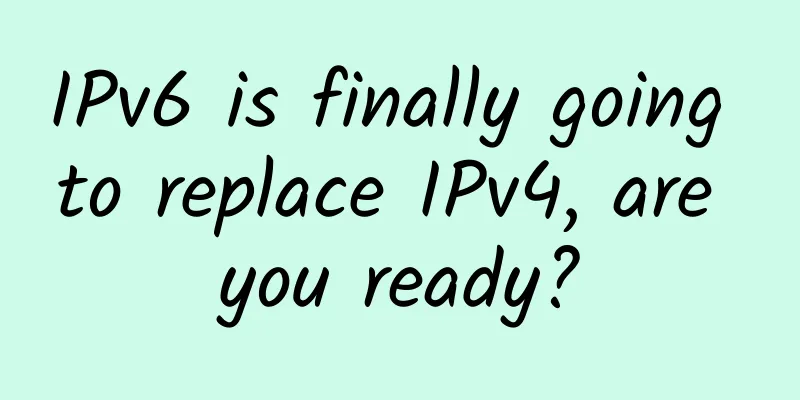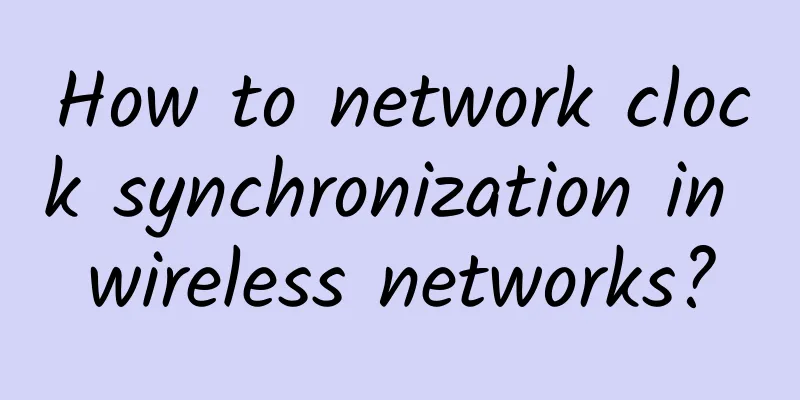IPv6 is finally going to replace IPv4, are you ready?

|
What to do on the weekend? The weather is so cold and the bed is so warm! Of course, I will get into bed and read the article of the "Java Backend Technology" public account! Recently, the country has made efforts on IPv6. The editor got up early in the morning and compiled an article for everyone. I hope you will accept it. IPv6 is coming! Recently, the General Office of the CPC Central Committee and the General Office of the State Council issued the "Action Plan for Promoting the Large-Scale Deployment of Internet Protocol Version 6 (IPv6)" and issued a notice requiring all regions and departments to implement it in light of their actual conditions. The plan aims to accelerate the large-scale deployment of the next-generation Internet based on IPv6, and points out that by the end of 2018, the number of active IPv6 users in China will reach 200 million, by the end of 2020, it will reach 500 million, and by the end of 2025, China's IPv6 scale will reach the first place in the world. The National Engineering Center for Next Generation Internet also announced that the "Snowman Project" initiated by the center has completed the installation of 25 IPv6 root servers around the world. Among them, China has deployed 4, breaking the dilemma of not having root servers in the past. At the same time, the National Engineering Center for Next Generation Internet officially announced the launch of IPv6 public DNS: 240c::6666. By providing high-performance public DNS services for free, it will create a safe, stable, high-speed and intelligent Internet experience for the majority of IPv6 Internet users, and help fully implement the "Action Plan for Promoting Large-Scale Deployment of Internet Protocol Version 6 (IPv6)". The National Engineering Center for Next Generation Internet said that recursive nodes have been deployed in many regions around the world, including Beijing, Guangzhou, Lanzhou, Wuhan, Chicago, Fremont, London, and Frankfurt. Deployment based on IPv6 BGP Anycast allows users to access the nearest domain, significantly reducing the access delay when resolving domain names to the root server, and ensuring speed. In addition, IPv6 public DNS will reduce the recursive process by actively synchronizing com/net domain names, caching hotspot domain names, and other measures to achieve the fastest response to the greatest extent. Why should we start implementing IPv6? The TCP/IP protocol is the cornerstone of the development of the Internet, of which IP is the network layer protocol that regulates the exchange and routing of packet information on the Internet. The IPv4 protocol address currently used is 32 bits long, and the total number of approximately 4.3 billion IPv4 addresses has been allocated. Statistics show that the United States has the most IPv4 addresses, with each Internet user receiving nearly 6 addresses on average, while Internet users in developing countries such as China, Brazil and Mexico have less than half an IPv4 address per capita. With the integration and development of network applications such as Internet+, Internet of Things and Industrial Internet, the global demand for IP addresses will continue to grow. It is predicted that by 2020, the number of connected devices in the world will exceed 30 billion, and China's demand for IP addresses may exceed 10 billion. What is IPv6? 1. First, let's start with the most familiar IPv4 and look at the division structure of IPv4: 2. IPv4 is divided into 5 categories of addresses: 3. IPv4 has 32 bits in total, and the value range is: There are a total of 2^32-1 addresses. 4. So what is IPv6? It can be seen that IPv6 is a very complex string of characters. In fact, it is a 128-bit hexadecimal number! It can provide 2 to the power of 128 IP addresses! 5. IPv6 in Windows IPv6 representation The length of an IPv6 address is 128 bits, which is four times the length of an IPv4 address. Therefore, the dotted decimal format of IPv4 is no longer applicable and hexadecimal representation is used. There are three representation methods for IPv6. 1. The format of hexadecimal notation is X:X:X:X:X:X:X:X, where each X represents 16b in the address, expressed in hexadecimal, for example: In this representation, the leading 0 of each X can be omitted, for example: 2. 0-bit compression representation In some cases, an IPv6 address may contain a long segment of 0s. You can compress a continuous segment of 0s into "::". However, to ensure the uniqueness of address resolution, "::" can only appear once in the address. For example: 3. Embedded IPv4 address representation In order to achieve IPv4-IPv6 interoperability, the IPv4 address will be embedded in the IPv6 address. At this time, the address is often expressed as: X:X:X:X:X:X:dddd. The first 96b is expressed in dotted hexadecimal, and the last 32b address is expressed in IPv4 dotted decimal. For example, ::192.168.0.1 and ::FFFF:192.168.0.1 are two typical examples. Note that in the first 96b, the method of compressing 0 bits is still applicable. Advantages of IPv6 over IPv4 IPv6 is the sixth version of the IP address protocol, which was born in 1999. Its biggest advantage is that the designed address length is 128 bits, which can provide 2 to the power of 128 IP addresses. Even if all the sand on the earth is turned into transistors, there will still be enough IP addresses for electronic devices to use. The nearly infinite IP addresses allow IPv6 to accommodate a large number of devices, which, together with technologies such as 5G, will support the rapid development of emerging industries such as mobile Internet, Internet of Things, industrial Internet, cloud computing, big data, and artificial intelligence. In addition, there are many other advantages, as follows: 1. Larger address space The IPv4 IP address length is 32, which means there are 2^32-1 addresses; while the IP address length in IPv6 is 128, which means there are 2^128-1 addresses. 2. Smaller routing tables The address allocation of IPv6 follows the principle of clustering from the beginning, which enables the router to represent a subnet with one entry in the routing table, greatly reducing the length of the routing table in the router and increasing the speed at which the router forwards data packets. 3. Enhanced multicast support and flow-control support. This has given multimedia applications on the network an opportunity to develop rapidly and provided a good network platform for Quality of Service (QoS) control. 4. Added support for auto-configuration. This is an improvement and extension of the DHCP protocol, making network (especially LAN) management more convenient and faster. 5. Higher security When using IPv6 networks, users can encrypt data at the network layer and verify IP packets, which greatly enhances network security. 6. Authentication and confidentiality IPv6 adds content about authentication, data consistency and confidentiality. 7. Large number of users facilitates real-name registration Due to the huge number of IPv6, it is feasible to have one IP for each device, so whether the real-name system will be implemented still needs to wait for the government's decision! |
Recommend
The seven-layer network model and TCP, UDP, what happens in an HTTP request
[[267883]] 1. Seven-layer network model The http ...
Eight data center technologies verified in 2015
2015 was a year in which new technologies matured...
China's first ISO/IEC artificial intelligence international standard project was approved
In August this year, the AI data quality intern...
Will 5G kill Wi-Fi? The father of wireless data calls it a joke
With the official release of 5G commercial photog...
5G network frequency band allocation is in turmoil again. Will the country allow spectrum resource auctions?
The recently revised "Radio Management Regul...
China will soon become the global center of artificial intelligence technology
What role will China's artificial intelligenc...
Top 5 IT Infrastructure Monitoring Tools
All IT departments face this problem - when probl...
Simple analysis of the three important requirements for remote network connections
The continuous emergence and upgrading of online ...
edgeNAT: 840 yuan/month-Daul E5 2670v3/32GB/1TB SSD/10M bandwidth/Korea data center
Previously, I mainly shared information about edg...
AI and blockchain: What kind of sparks will the collision of these two popular technologies create?
Editor's note: Blockchain and AI are the two ...
Scenario-based × disruptive innovation: polishing the minimalist "light" with users
"Users asked for an optical network solution...
IPC Streaming Media Transport Protocol (Part 2) - SRT
1. The past and present of SRT SRT is the acronym...
McKinsey: 5G development is not fast, and 5G upgrades will reach a climax in 2022
The 5G era is coming. How does the industry view ...
New productivity of future campuses: enlightenment from the campus network upgrade and reconstruction of Nanjing Jiangbei New District Pukou Foreign Language School
The rapid development of information technology h...









